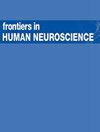Measuring information alignment in hyperscanning research with representational analyses: moving beyond interbrain synchrony
IF 2.7
3区 医学
Q3 NEUROSCIENCES
引用次数: 0
Abstract
Hyperscanning, which enables the recording of brain activity from multiple individuals simultaneously, has been increasingly used to investigate the neuropsychological processes underpinning social interaction. Previous hyperscanning research has primarily focused on interbrain synchrony, demonstrating an enhanced alignment of brain waves across individuals during social interaction. However, using EEG hyperscanning simulations, we here show that interbrain synchrony has low sensitivity to information alignment across people. Surprisingly, interbrain synchrony remains largely unchanged despite manipulating whether two individuals are seeing same or different things at the same time. Furthermore, we show that hyperscanning recordings do contain indices of interpersonal information alignment and that they can be captured using representational analyses. These findings highlight major limitations of current hyperscanning research and offer a promising alternative for investigating interactive minds.在超扫描研究中利用表征分析测量信息排列:超越脑间同步性
超扫描可以同时记录多个个体的大脑活动,越来越多地被用于研究社会交往的神经心理过程。以前的超扫描研究主要集中在脑间同步性上,证明了在社交互动过程中不同个体的脑电波一致性增强。然而,通过脑电图超扫描模拟,我们在此表明,脑间同步对不同人之间信息一致性的敏感度较低。令人惊讶的是,尽管我们操纵了两个人在同一时间看到的是相同还是不同的事物,脑间同步性在很大程度上仍然保持不变。此外,我们还表明,超扫描记录确实包含人际信息一致性的指数,而且可以通过表征分析捕捉到这些指数。这些发现凸显了当前超扫描研究的主要局限性,并为研究交互式思维提供了一种前景广阔的替代方法。
本文章由计算机程序翻译,如有差异,请以英文原文为准。
求助全文
约1分钟内获得全文
求助全文
来源期刊

Frontiers in Human Neuroscience
医学-神经科学
CiteScore
4.70
自引率
6.90%
发文量
830
审稿时长
2-4 weeks
期刊介绍:
Frontiers in Human Neuroscience is a first-tier electronic journal devoted to understanding the brain mechanisms supporting cognitive and social behavior in humans, and how these mechanisms might be altered in disease states. The last 25 years have seen an explosive growth in both the methods and the theoretical constructs available to study the human brain. Advances in electrophysiological, neuroimaging, neuropsychological, psychophysical, neuropharmacological and computational approaches have provided key insights into the mechanisms of a broad range of human behaviors in both health and disease. Work in human neuroscience ranges from the cognitive domain, including areas such as memory, attention, language and perception to the social domain, with this last subject addressing topics, such as interpersonal interactions, social discourse and emotional regulation. How these processes unfold during development, mature in adulthood and often decline in aging, and how they are altered in a host of developmental, neurological and psychiatric disorders, has become increasingly amenable to human neuroscience research approaches. Work in human neuroscience has influenced many areas of inquiry ranging from social and cognitive psychology to economics, law and public policy. Accordingly, our journal will provide a forum for human research spanning all areas of human cognitive, social, developmental and translational neuroscience using any research approach.
 求助内容:
求助内容: 应助结果提醒方式:
应助结果提醒方式:


